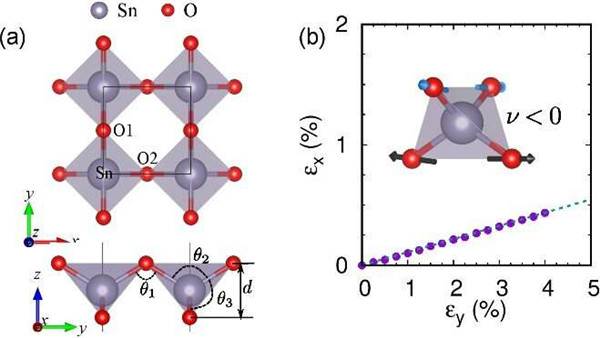

Recently, Prof. Zheng Xiaohong's research group from the Institute of Solid State Physics (ISSP) of the Hefei Institute of Physical Science (HFIPS) predicted a new two-dimensional (2-D) tin dioxide (SnO2) monolayer phase (P-4 m2) via first-principles calculations.
Bulk SnO2 is an important n-type wide-bandgap (~3.6 eV) semiconductor and is widely used as electrode materials, chemical sensor components, etc. but systematic study of possible tin oxide phases in 2-D is still missing. In particular, given the claims of magnetism in SnO2 thin films, it is worth investigating whether a stable SnO2 2-D phase can be synthesized or magnetism can be induced.
In this research, the researchers provided direct evidence of a stable and new 2-D phase of SnO2 (δ- SnO2) with auxetic properties based on density functional theory method, which was impressive for its negative in-plane Poisson's ratio and high electron mobility.
In addition, they found double Mexican-hat-like band edges near the Fermi level presented by the valence band structure of SnO2 and therefore a ferromagnetic phase transition and half-metallic ground state could be induced by hole doping within a very wide concentration range.
They also proved that SnO2 monolayer could be tuned to be either an XY magnet or an Ising one, with a magnetic critical temperature above room temperature at proper hole concentrations.
All the above findings indicated that the predicted 2-D phase of SnO2provided a new example of rare p-type magnetism and a potential candidate material for spintronic applications.